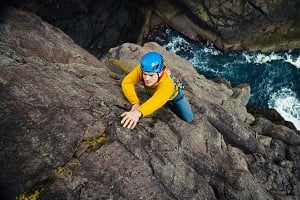
The Polldubh crags in Glen Nevis are an archetype of the hidden gems of British climbing. Although no single crag on the hillside above Lower Falls is a huge multi-pitch wall, each is full of brilliant rock climbing pitches which are so numerous, even a passionate local such as myself has not found my way round all the possibilities. Following the latest round of development since 2000, there is also now a huge variety of established boulder problems to compliment the hundreds of trad climbs.
A number of things make Polldubh worthy of note among the countless places all over the UK which have good outcrop climbing. Chief among them for me is the rock. Polldubh's sliver of mica schist - slowly baked between the Ben Nevis and Mamores granites - have weathered into a brilliant mix of rough textured high quality rock. Intricate and varied in nature, and not like mica schist anywhere else I've been. On the climbs it lends 'thank goodness' incut edges and flakes on otherwise airy slab climbs. On the boulders it offers fantastic grippy crimps on which to bear down.
The second big aspect is of course the scenery. The upper tier buttresses of Polldubh have a vista onto the Mamores that no-one could tire of, but also a sense of solitude and quiet you can't easily find on crags that take 15 minutes or so to walk to. These buttresses are my favourite; Sky Pilot, Secretaries Crag and Black's Buttress among others.

As a teenager visiting regularly from Glasgow, I worked my way through many of the hardest routes in Polldubh. We often came in winter too, for fantastic week-long trips, winter climbing on the Ben if it was white, training furiously in the climbing wall if it was wet, or cragging in Polldubh if the sun came out. There is of course nowhere else in the UK where you can do this without having to drive around. We are so lucky to have it and this is not lost on me, hence my decision to move here when I had the choice as professional climber to live anywhere in the world.
Even before I moved, I had already noticed the potential for extensive bouldering. As a Glaswegian, I was brought up climbing on the Dumbarton boulders, and so I was perhaps unusual for my generation in viewing bouldering as the core climbing discipline, and everything else following behind. We organised ourselves with tarps for the boggy landings, boulder pads and wire brushes and set about expanding on the handful of problems already opened on the Heather Hat Boulder and Sky Pilot by Cubby and a few others.
Deep Breath (8A), below Pinnacle Ridge was a great highlight. I did it on a day where I was out coaching some talented young climbers from Inverness. As we moved our way round the circuit of 5-7As, I showed them the project as we walked past and explained that I'd been trying it for a few sessions and felt pretty close, and that if I could swing my feet back on after the crux cut-loose move, I'd certainly do it. Despite my protestations, they insisted I try it again there and then. I agreed to have one try. Perhaps it was the good conditions, the good vibe of the day, the relaxed warm-up, or all three, but I cut loose and for the first time my feet swung back and I was still on the rock. Behind me, the silence was broken by Ellen's sharp intake of breath. She realised at the very same moment as me that it was on. I didn't let go and called the climb Deep Breath after the strong memory from the crucial moment of success.
Sky Pilot, to me, holds still greater meaning, since it has been a place of several rock climbing obsessions. Big Long Now (8B) started off as my endurance training in preparation for Echo Wall up on Ben Nevis. It ended up being a odd experience of contrasts between the intensity of each attempt over a whole summer and the meditative experience of the necessary hour long waits between each attempt to recover. But the biggest of all was Cubby's old project left of Sky Pilot, which eventually became Seven of Nine (8B+). In spring 2011 I had an amazing ten week siege on this, completely committed to giving it the very best I could. I fell off the crux slap to the smoothest of smooth slopers over 100 times. My routine was alternate days at the crag or doing a fasted run across the Lochaber hills. On the crag days, my warm-up routine was so familiar it was like a meditation. I had my four high quality attempts, followed by forcing myself to climb to the move before the crux at least 10 more times, so I could climb it faster and faster without wasting so much as a muscle fibre twitch of superfluous effort.
I beat it into submission and it was great that Cubby was with me at the crag taking pictures the day I finally scraped through to the E7 climbing in the soloing zone above the crux. I was completely pumped and could have fallen off any move. Cubby was shouting up if I was okay, but I couldn't even answer. I knew I had no option but to completely focus and go for it.
The combination of such intense obsessions with climbs, and the day to day experience of living them out in the lovely, ever changing scenery of Glen Nevis is what makes this place so special.
As I write, it's snowing hard outside at 3pm on a December afternoon. Time to stop work, take my lights, my Gore-Tex jacket and head up to my roof project in Polldubh for a quiet evening of bouldering, interspersed with watching the snow fall in the beam of my light and wonder how to make another sequence of holds work as a future climb.
Route suggestions
The Gutter (D), Difficult. Many a Lochaber local's first rock climb.
Flying Dutchman (S), Severe. Three pitches of slab climbing fun with plenty of incut edges.
Phantom Slab (VS 4c), Very Severe. Hidden away, yet exposed when you are on it.
Storm (HVS 5a), HVS. Two fantastic pitches, separated by the most bomber hanging belay ever on the huge Scot's pine.
Secretaries' Super Direct (HVS) E1. Fine exposed slab climbing. Severe if you circumnavigate the crux arete.
Fang (E2 5b), E2 5b. Great wall climbing.
Land Ahoy (E3 5b), E3 5b. A solo on lovely grippy holds, steady but keeps going.
Black Friday (E5 6a), E5 6a. recently cleaned, well protected and burly, but soft for the grade.
Bad Life Choices (E7 6b), E7 6b. Perfect crimpy slab, a long way above your mat.
Misadventure (E8 6c), E8 6c. Low in the grade but tricky crux compressing the round arete.
Seven of Nine (E9 7b) E9 7b. Font 8B+ to a bold finish.
Boulder suggestions
Maisie Gunn's Magic Midgie Cream (f6B) 6B. Great holds in the left side of the Heather Hat Boulder's roof.
Inspector Clueso (f6B) 6B, Cameron Stone. Rough crimpy wall. SS is 'Cath' 6C from the jug at the back of the roof.
Deep Breath Arete (f7A) 6C. Long and balancy steep arete.
Pagan Uilleann (f7A+) 7A. The classic Heather Hat roof with a great kneebar.
MacTavish (f7B) 7B. Powerful and crimpy SS on the Standing Stone.
Beatle Back (f7C) 7C Cubby's classic technical traverse. Various extensions, including Big Long Now 8B.
Deep Breath (f8A) 8A. The world's best drop knee move?
Bigfoot (f8A+) 8A+ A great, uncompromising line up the wall.
Logistics
When to Go
For the trad, April-mid May is best. Spring in the highlands often brings sunshine but still with snow covered mountains and no midges. The glen is also beautiful in autumn and by late September the midges are gone and the friction is back. Although midges can be a problem in mid-late summer, the ongoing project to clear the birch trees from around the crags by the Nevis Landscape Partnership continues to improve the breeze factor. On really still, muggy days, bring a net and long sleeves for belaying and you'll be fine. If there is a slight breeze at the roadside, head up to the upper buttresses which are often midge free in the breeze, while the lower buttresses are fully midge.
It is possible to find good conditions for bouldering year-round. In summer, Sky Pilot is often a wind tunnel and can be excellent conditions. It is also a good bet in the depths of winter too, since the roadside boulders don't get the warmth and drying of the sun in December and January. But in general there is a long window between February and late May when conditions are frequently excellent and the boulders tend to dry fast, with the exception of Sky Pilot which is a bit seepy after really wet spells.
If the weather is good, a visit to Glen Nevis can easily be tied in with many of the mountain crags in the area such as Ben Nevis, Glen Coe and Skye and makes a perfect rock climbing option if feet are tired or the cloud is down. If it is wet, bouldering is still possible at Sky Pilot and to an extent on the Heather Hat and Cameron Stone boulders. The recently opened Three Wise Monkeys Climbing centre in Fort William provides an excellent place to retreat to in rain, or just for a brew and a place to meet up with other climbers and gather some local knowledge.
How to Get to Glen Nevis?
The Polldubh crags can be reached in 10 minutes by car from Fort William. There are lay-bys below the various buttresses. Public transport is straightforward too. A regular bus (No. 42) goes from Fort William to Lower Falls in the summer months and I regularly linked this up with the Citylink from Glasgow when I lived there. Fort William can also be reached by train on the West Highland line. Visitors from England often use the excellent Caledonian Sleeper service which starts out from London Euston. Locals often cycle out from the Fort for a session in the evenings.
Accommodation Advertise here
No Premier Listings found in this area
Glen Nevis and Fort William have a huge number of accommodation options, being a major tourist hub of the Highlands. There is a large and well-run campsite in Glen Nevis, a Youth Hostel and many other bunkhouses and hostels and other options in the Fort itself.
Gear
For bouldering the landings at most of the boulders are quite good, although a tarp can be very useful at the Cameron Stone which is a little boggy underfoot.
A standard trad rack is fine for the trad climbs, although micro-wires are useful for quite a few of the routes, especially the harder ones. If you are visiting in the summer, a midge net can be a life saver if the breeze drops. Fort William is well equipped with various outdoor shops if there is anything extra you need.
Outdoor Shops Advertise here
No Premier Listings found in this area
Guidebook
The SMC have recently released the new edition of their Highland Outcrops guidebook, now called Highland Outcrops South. It has excellent and detailed descriptions of all the trad climbs. For the bouldering, the Boulder Scotland guidebook is now in its 3rd edition and will point you at all the boulders and a decent selection of problems, but by no means all of them.
Watch a film about Polldubh filmed by Dave below:



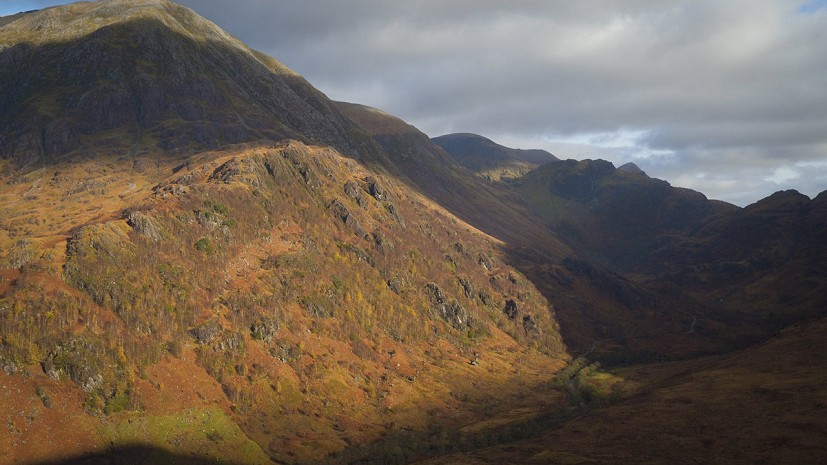
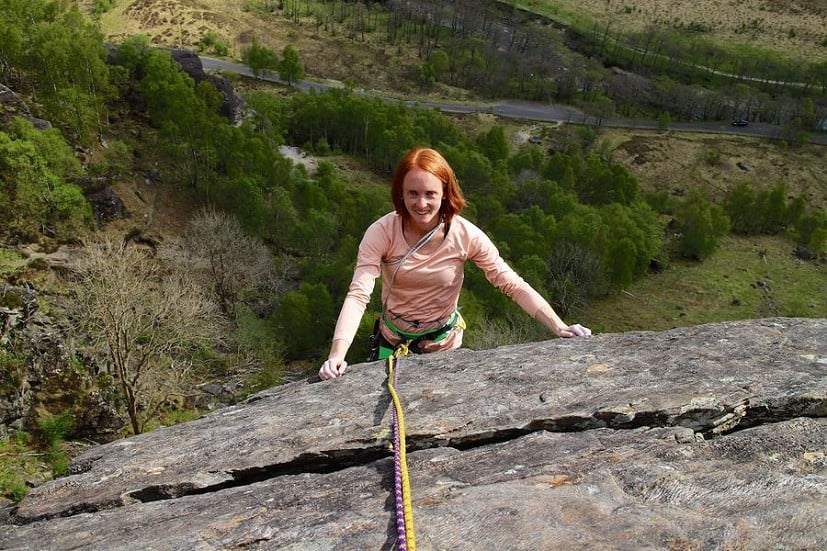
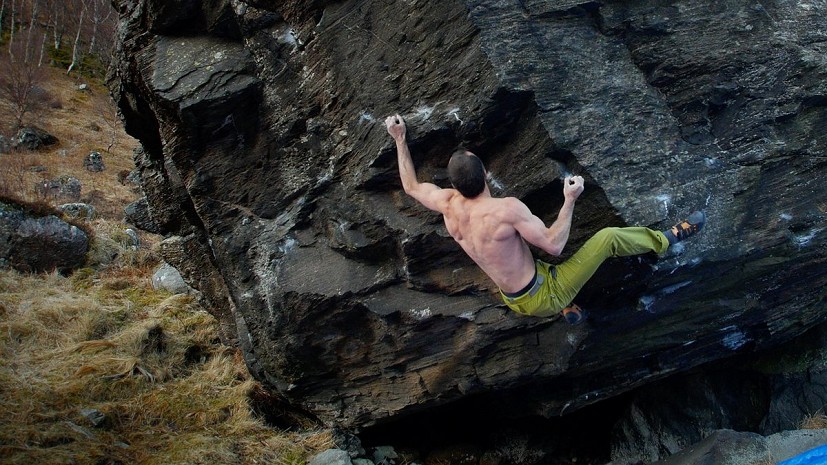

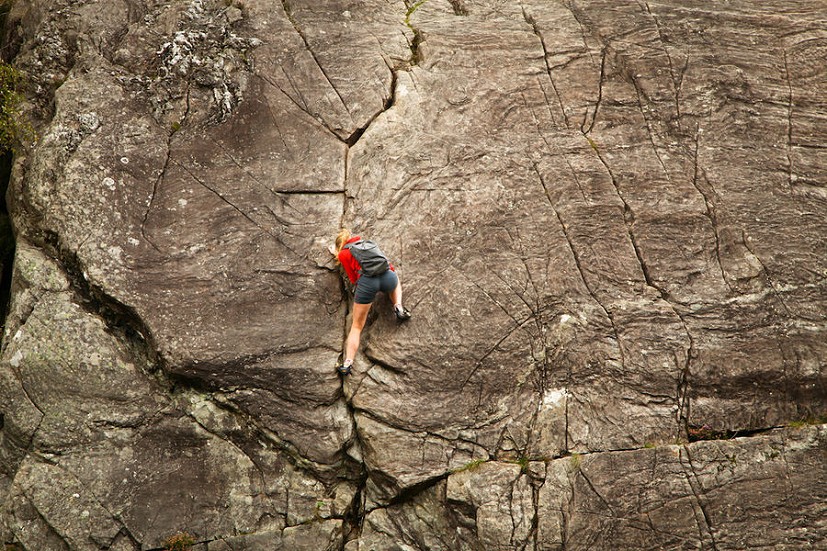
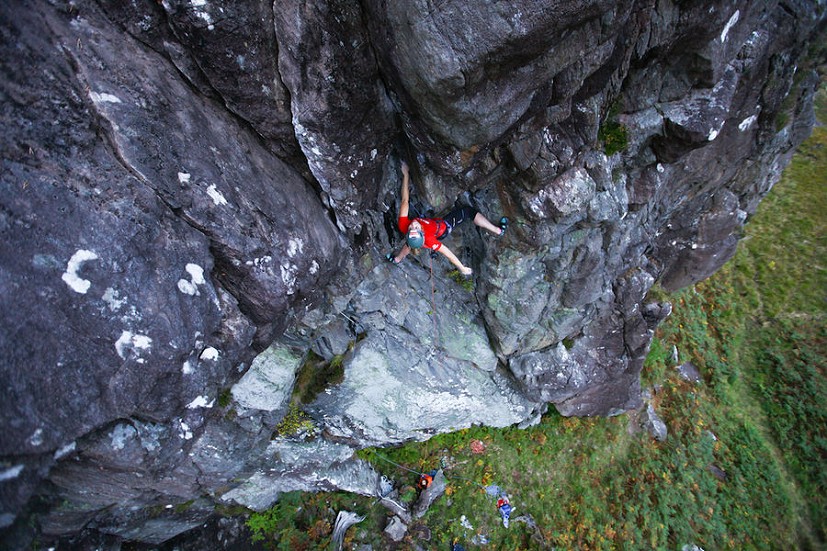


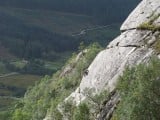

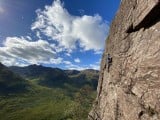

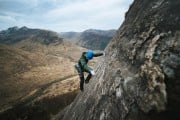


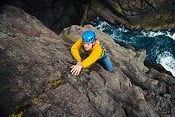
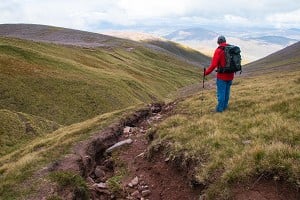
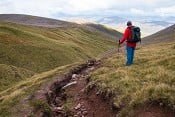
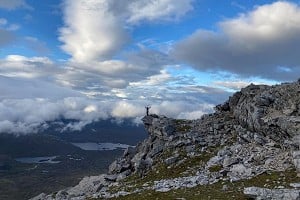
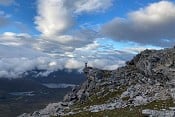



Comments